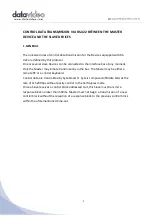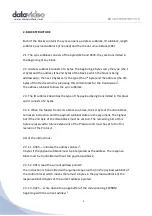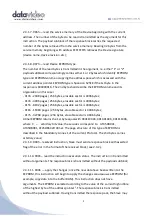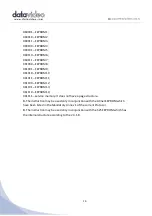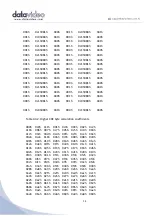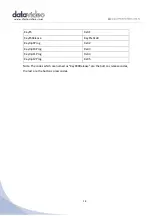
9
- bit 1 is set to"1" - the device is executing a process, the device may be expecting the
instructions of the pressed button code at the moment;
- bit 2 is set to "1"- the device is executing a process, the instruction of the T-bar
position code cannot be executed at the moment;
- bit 3 is set to "1"- the device is executing a process, the device may be expecting the
instructions the instruction of the T-bar position code at the moment;
- bit 4 is set to "1" - the device is executing a process, the instruction of the indication
request cannot be executed at the moment;
- bit 5 is set to "1" - the device is executing a process, the device may be expecting
the instruction of the indication request at the moment;
- bits 6 ... 7 - reserve ( are set to "0");
- Byte 2 – indication status of the Device:
- bit 0 is set to "1" — the indication of the device must change(from the moment of
the response to the latest instruction of the indication request);
- bits 1 and 2 — the next states of the bits determining the brightness level of the
control keyboard (they are executed optionally by the keyboard),:
00 — nominal brightness level;
01 — brightness level down one step;
10 - brightness level down two steps;
11 - brightness level down three steps;
- bits 3 ... 7 - reserve (must be set to "0");
- Byte 3 - the lest received code of a pressed button;
- Byte 4 and 5 — the current T-bar position code (lower byte ahead);
- Byte 6 - reserve (must be "0").
Notes.
1. The Device type for the Switcher is 0Fh and the only address number is 00h. The
Device type for a remote PC is FFh and the only address number is 01h.
2. Device may have several EEPROM chips of different types which share a common
address space (according to the current Protocol). The EEPROM selection and the
selection of the service memory is made by the higher nibble of the highest byte of
the address. The correspondence between the nibble and the memory is the
following:
0b0000 – EEPROM0;


